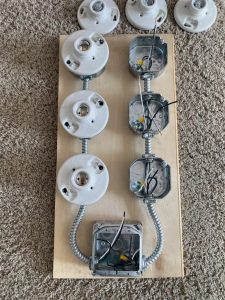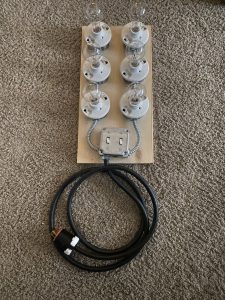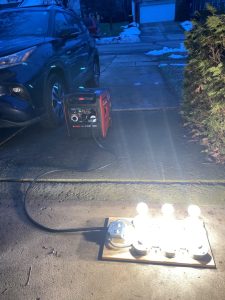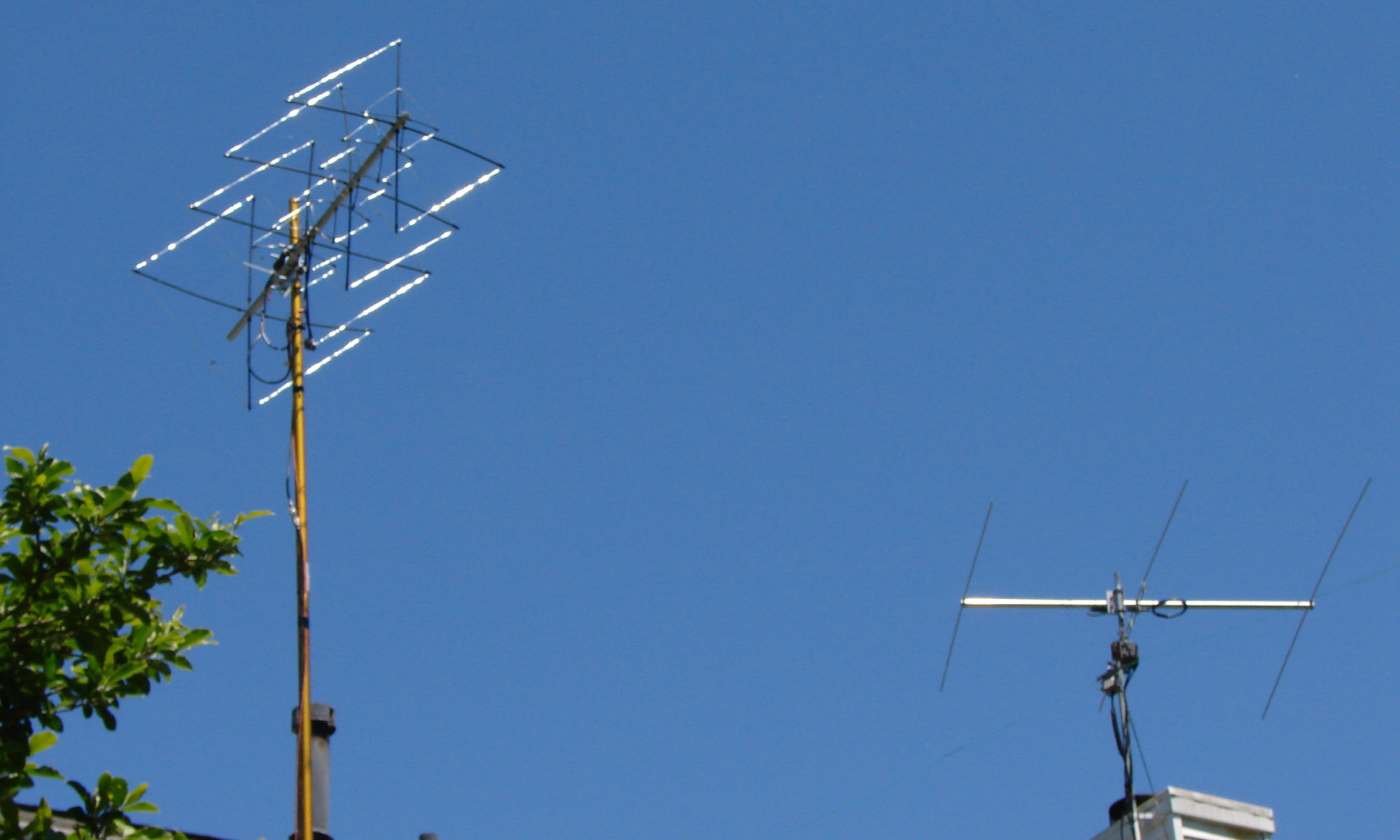After a number of power outages I finally decided to purchase a portable generator to power critical loads when an outage was more than a few hours. It was put to use recently during a 38-hour outage and at least kept the house warm and the food cold.
Part of owning anything mechanical like a generator is routine  maintenance and operation. A generator should not be left for long periods of time without being run, so the oil and fuel don’t deteriorate and other parts don’t begin to corrode. The manufacturer recommends running it once a month. I decided to build a load bank to provide a load for the generator’s output and to prove tht the generator could deliver power.
maintenance and operation. A generator should not be left for long periods of time without being run, so the oil and fuel don’t deteriorate and other parts don’t begin to corrode. The manufacturer recommends running it once a month. I decided to build a load bank to provide a load for the generator’s output and to prove tht the generator could deliver power.
Commercial load banks used for testing large generator sets  are like large toasters or dummy loads, made up of heating elements with cooling fans. I decided to build something considerably simpler, so I built a unit on a piece of plywood with lamp sockets fitted with incandescent light bulbs. For practical reasons I settled on six sockets, three for each leg of the 240-volt output, and fitted it with 200-watt light bulbs. I equipped it with switches to allow two, four, or all six lamps to be activated.
are like large toasters or dummy loads, made up of heating elements with cooling fans. I decided to build something considerably simpler, so I built a unit on a piece of plywood with lamp sockets fitted with incandescent light bulbs. For practical reasons I settled on six sockets, three for each leg of the 240-volt output, and fitted it with 200-watt light bulbs. I equipped it with switches to allow two, four, or all six lamps to be activated.
 Once the bill of materials was decided on, I visited my local big-box home store where a friend supervises the electrical department, and we picked out the needed pieces. Construction was straightforward and took a total of about eight hours of mounting, fitting, wiring and continuity testing.
Once the bill of materials was decided on, I visited my local big-box home store where a friend supervises the electrical department, and we picked out the needed pieces. Construction was straightforward and took a total of about eight hours of mounting, fitting, wiring and continuity testing.
Once completed, I gave the generator a routine oil change and  fired it up, plugged in the load bank and switched on the lights. Six 200-watt bulbs generate a lot of light and heat! I ran it for about 15 minutes and let it cool down for about an hour afterward, before removing the bulbs, storing them in a box, and putting the board and lamps away.
fired it up, plugged in the load bank and switched on the lights. Six 200-watt bulbs generate a lot of light and heat! I ran it for about 15 minutes and let it cool down for about an hour afterward, before removing the bulbs, storing them in a box, and putting the board and lamps away.
Though not a radio project, and not strictly a necessity, it was a good to put my planning and construction skills to good use to build a useful and practical project. Click on the video below to watch it operating.
